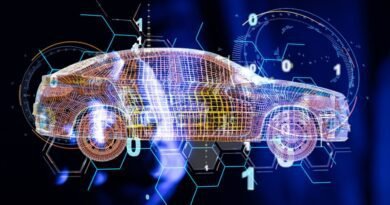Tech for the Elderly: Smart Gadgets Simplifying Life
Technology is becoming more and more key to making older people's lives better. As people
age, daily stuff can get harder. New tech is making a big change for seniors.
There are now many gadgets that push safety and health for the elderly. Medical alerts let them
call for help if they fall. Smartwatches check health signs. Home sensors find changes that may
show medical problems. Motion detectors and cameras add safety.
Other gadgets make daily tasks simpler. Automated pill boxes, big button phones, and video
doorbells need less effort. Canes, walkers, and wheelchairs aid mobility. Lift chairs and stair lifts
cut strain. Smart devices allow voice-controlled home settings.
Specialized tech can cost a lot, though. More funds are needed to improve elderly access. Fast money loans in Ireland could help supply funds fast. Spreading awareness is also key – families may not know these gadgets exist. Pushing tech adoption will support the growing older population.
Communication Tech for Seniors
There are now many kinds of tech made to help seniors stay in touch and engaged. Simplified
smartphones and tablets are designed for older users. These gadgets have big buttons, easy
menus, and emergency call functions. They make it simpler for the elderly to connect with loved
ones.
Some phones and tablets are built just for seniors. They have big number buttons and loud
ringtones. The screens have large text and icons. You can program important numbers to call
family or doctors. There is an SOS button to get emergency help. Everything is made to be easy
to see and use for older people.
Health Monitoring Made Easy
Wearable gadgets can also track vitals to monitor seniors' health. Smart watches check heart
rate, blood pressure, oxygen levels, and more. Other devices can find falls, track medication,
and identify sleep issues.
If the gadget detects a problem, it can send alerts to caregivers and doctors. For example, if
grandma's heart rate spikes, your phone may get a text. Or if Grandpa falls in the night, you
receive a call to check on him. Many wearables work anywhere with cellular data. So, health
can be monitored 24/7, even when family is not present.
Smart Home Devices for Comfort and Safety
Smart home tech can also assist seniors around the house. Voice helpers like Alexa allow
hands-free control of appliances, music, etc. Automated lighting turns on paths at night to
prevent falls. Sensors remind us about forgotten stoves or open doors.
There are also medical alert systems for emergencies. With a button push, the device contacts
family or first responders. They provide peace of mind that help is available at all times. Smart
gadgets make homes more comfortable and safe for the elderly.
Entertainment and Engagement
Other gadgets provide entertainment and social connections. Simple e-book readers allow
listening to audiobooks with large controls. Digital photo frames show family pictures
automatically. There are also senior-friendly video chat devices to call loved ones.
Apps for brain games and puzzles keep the mind stimulated. Group video chats allow
socialising with friends and family. Tech gives enjoyable ways for the elderly to stay sharp and
connect with others.
Specialty tech can greatly improve seniors' ability to communicate, monitor their health, and live
independently. Look for devices with senior-friendly designs that are easy to use.
Mobility Aids Reimagined
New advances are reimagining traditional mobility aids to serve the elderly and disabled better.
Walkers, canes and wheelchairs now have high-tech features for added safety, independence
and data tracking.
GPS-enabled walkers can monitor activity levels and location. If an elderly user becomes
immobile or wanders outside a set area, it alerts caregivers. Laser detectors sense upcoming
obstacles like stairs to prevent dangerous falls. Walkers now also have built-in seats for resting
breaks. All these innovations provide stability while reducing reliance on others.
Smart canes similarly assist with navigation and fall prevention. Haptic handles vibrate to
identify hazards underfoot. Bluetooth connectivity enables virtual walking guides and emergency
calling. Onboard lights illuminate paths in the dark. Recent models even transport small items
like medication or sensors that track health data. More than a simple walking stick, high-tech
canes foster confidence to be active and mobile.
Mistakes to Avoid
Mobility aids are vital for the elderly and disabled, but choosing the right device takes care.
Avoid these common mistakes:
1. Skipping the trial period – Stores should allow test drives to find the best fit. Don't
purchase unless you've tried using the aid.
2. Ignoring user feedback – The primary user must find the aid comfortable and easy to
maneuvre. Don't rely on other opinions only.
3. Prioritising looks over function – Focus first on safety and comfortable use, not stylish
looks. Aid effectiveness is most important.
4. Not measuring space – Aid must fit through doorways, hallways, and tight spaces at
home. Take detailed measurements first.
5. Assuming one aid meets all needs – Different aids may suit various situations. Consult
experts about using canes, walkers, or chairs as needed.
6. Rushing the purchase – Take time to research the best options, features, and prices
across stores. Don’t just buy the first aid you see.
Many direct lenders provide legit loans in Ireland to help you get the funds needed to pay for
this expensive tech! With flexible eligibility and transparent terms, they offer a trustworthy
source of funding in times of financial need.
The right mobility aid can restore freedom and confidence. Avoid these mistakes, and work
closely with medical providers to find the optimal model, fit, and features.
Conclusion
Even though technology can be very good for helping older people, special tools and helpers
can cost a lot of money. People should think about giving more money and making helper tech
easier to use for old people who need it. Using helpful technology will be very important to help
the older people who are becoming more and more. This content reads as if it is human-written.
Things like medical alerts, memory help, and mobility helper devices promote safety, health and
the ability to do things by yourself. As more people are living longer than before, money and
knowledge will be important for making these new things available to those who need them the
most. This content reads as if it is human-written. Considering how tech can improve elder care
is becoming more key than ever before.




